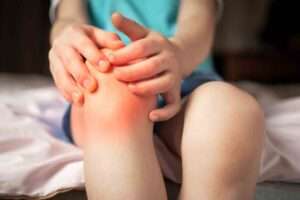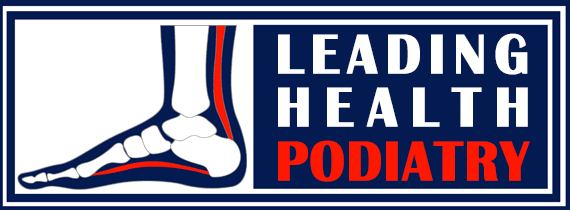Osgood Schlatter’s Apophysitis
Osgood-Schlatter’s apophysitis is a common cause of knee pain in children and adolescents, often referred to as “growing pains” in the knees. First described in the 1890s, it involves a painful inflammation at the tibial tuberosity, the bony bump at the top of the shin bone. This condition occurs during periods of rapid growth when the body undergoes significant changes, especially in highly active children and teens.

What Causes Osgood-Schlatter’s Apophysitis?
The exact cause of Osgood-Schlatter’s apophysitis remains debated, but it is generally believed to be caused by repetitive stress on the tibial tuberosity. The powerful contractions of the quadriceps (front thigh muscles) during activities like running, jumping, and squatting can irritate the growth plate at the top of the tibia. The condition typically occurs during growth spurts in children who are very active in sports, particularly those involving running and jumping.
Symptoms of Osgood-Schlatter’s Apophysitis
Osgood-Schlatter’s is characterized by pain, swelling, and tenderness just below the kneecap at the top of the shin bone. Symptoms tend to worsen with physical activities, such as running, squatting, kicking, or kneeling. While it was once more common in boys, recent research shows that Osgood-Schlatter’s affects both boys and girls equally during their adolescent years.
Treatment for Osgood-Schlatter’s Apophysitis
Managing Osgood-Schlatter’s apophysitis involves addressing the underlying risk factors and symptoms. A tailored treatment plan can help reduce pain and discomfort and prevent the condition from worsening. Here are some treatment options that may be used:
- Isometric Strengthening and Stretching: Targeted exercises to strengthen and stretch the quadriceps, hamstrings, and other muscles around the knee can help alleviate symptoms and improve function.
- Footwear Assessment: Proper footwear is essential to maintaining correct alignment and avoiding further strain on the knee. We will assess your child’s shoes to ensure they offer adequate support.
- Technique Revision and Education: We will work with you and your child to revise warm-up and cool-down exercises, and discuss other strategies to reduce stress on the knee joint and surrounding muscles.
- Custom Orthotics: If there are alignment issues in the feet or legs contributing to the knee pain, custom orthotics can help correct these issues, providing additional support and relief.
Prevention and Self-Management
In addition to formal treatment, it is important to focus on self-management techniques at home. Ensuring proper warm-ups, cool-downs, and stretching routines can prevent the symptoms from worsening. If Osgood-Schlatter’s is caught early and appropriately treated, most children and adolescents recover completely, though symptoms may persist during periods of rapid growth.
If your child is experiencing knee pain, contact Leading Health Podiatry for a comprehensive assessment and personalized treatment plan. We specialize in treating musculoskeletal conditions, including Osgood-Schlatter’s apophysitis, to get your child back to their activities as quickly and safely as possible.
